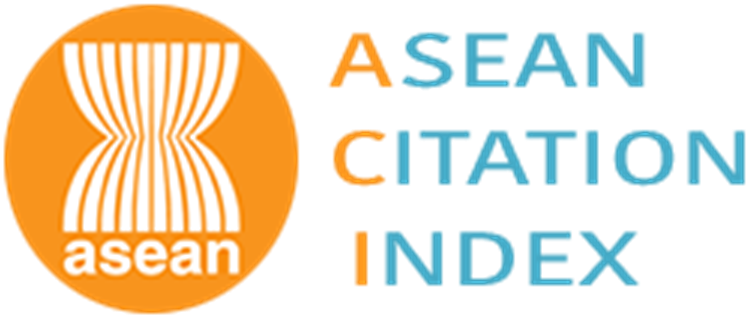ผลกระทบของกราฟีนออกไซด์ต่อแรงยึดเหนี่ยวระหว่างเส้นใยสังเคราะห์และซีเมนต์มอร์ตาร์
The Effect of Graphene Oxide in Bond Strength between Synthetic Fibers and Cement Mortar
Abstract
กราฟีนเป็นวัสดุระดับนาโน ซึ่งสังเคราะห์จากแกรไฟต์ด้วยวิธีทางเคมี ที่มีโครงสร้างระดับอนุภาคทางเคมีเป็นวงแหวนหกเหลี่ยมที่เชื่อมด้วยพันธะโคเวเลนต์ จึงทำให้มีคุณสมบัติที่โดดเด่นด้านความแข็งแกร่ง นำไฟฟ้าได้ดีและมีความยืดหยุ่นสูง งานวิจัยที่ผ่านมาพบว่าการผสมกราฟีนส่งผลให้กำลังรับแรงของมอร์ตาร์มีค่าเพิ่มขึ้นอย่างมีนัยสำคัญ งานวิจัยนี้เป็นการศึกษาผลกระทบของกราฟีนออกไซด์ต่อแรงยึดเหนี่ยวของมอร์ตาร์กับเส้นใยสังเคราะห์ซึ่งประกอบด้วย เส้นใยโพลีพรอพีลีน เส้นใยแก้วและเส้นใยบะซอลท์ โดยนำสารละลายกราฟีนออกไซด์มาผสมร่วมกับซีเมนต์มอร์ตาร์ ตัวอย่างทดสอบถูกนำมาทดสอบแรงยึดเหนี่ยวของเส้นใยด้วยวิธีถอนเส้นใยเดี่ยว (Single pull out test) ผลการทดสอบพบว่าตัวอย่างที่มีการฝังตัวของเส้นใยในมอร์ตาร์ผสมด้วยสารละลายกราฟีนออกไซด์มีแรงยึดเหนี่ยวเฉลี่ยเพิ่มขึ้นเมื่อเทียบกับตัวอย่างควบคุมและเส้นใยแก้ว มีแรงยึดเหนี่ยวระหว่างเส้นใยสังเคราะห์และมอร์ตาร์สูงสุด เมื่อเปรียบเทียบกับประเภทของเส้นใยทั้งหมด
Graphene is a nanomaterial chemically synthetized from graphite. The microstructure of graphene is in hexagonal form with covalent bonding. It exhibits excellent rigidity, electrical conductivity and flexibility. Several researches indicated that mixing graphene oxide with cement mortar can noticeably increase its strength. In this study, the effects of Graphene Oxide (GO) on the bonding strength of synthetic fibers were investigated. Three types of fibers were used, i.e. polypropylene, glass and basalt fibers. The GO solution was mixed with mortar. The specimens were subjected to a single fiber pullout test. Results showed that the sample with fiber embedded in GO mortar exhibited higher bonding strength than the control sample. The glass fiber had the highest bond strength compared to the others.
Keywords
[1] M. Wisetsuwannaphum, “Graphene, 2D materials for the future,” Materials Technology Journal, vol. 84, pp. 66–70, 2017.
[2] L. De Marchi, C. Pretti, B. Gabriel, P. A. A .P. Marques, R. Freitas, and V. Neto, “An overview of graphene materials: Properties, applications and toxicity on aquatic environments,” Science of the Total Environment, vol. 631–632, pp. 1440–1456, 2018.
[3] N. M. S Hidayah, Wei. Liu, C. Lai, N. Z. Noriman, C. Khe, U. Hashim, and H. Lee, “Comparison on graphite, graphene oxide and reduced graphene oxide: Synthesis and characterization,” in American Institute of Physics Conference Proceedings, 2017.
[4] W. Li, X. Li, S. J. Chen, Y. Liu, W. H. Duan, and S. P. Shah, “Effects of graphene oxide on early-age hydration and electrical resistivity of Portland cement paste,” Construction and Building Materials, vol. 136, pp. 506–514, 2017.
[5] D. Kang, K. S. Seo, H. Lee, and W. Chung, “Experimental study on mechanical strength of GO-cement composites,” Construction and Building Materials, vol. 131, pp. 303–308, 2017.
[6] S. Lv, Y. Ma, C. Qiu, T. Sun, J. Liu, and Q. Zhou, “Effect of graphene oxide nanosheets of microstructure and mechanical properties of cement composites,” Construction and Building Materials, vol. 49, pp. 121–127, 2013.
[7] S. C. Devi and R. A. Khan, “Effect of graphene oxide on mechanical and durability performance of concrete,” Journal of Building Engineering, vol. 27, pp. 1–12, 2020.
DOI: 10.14416/j.kmutnb.2022.09.017
ISSN: 2985-2145





